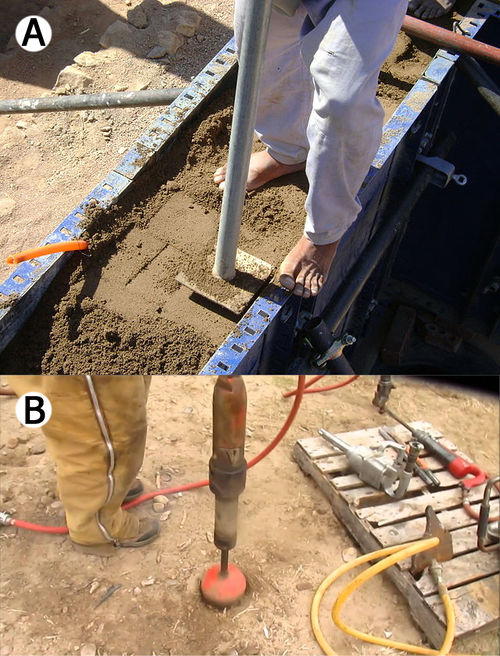Rammed Earth: Difference between revisions
Jump to navigation
Jump to search
mNo edit summary |
m (→Related Pages) |
||
| Line 15: | Line 15: | ||
* [[Lime]] plaster as an external covering for protection | * [[Lime]] plaster as an external covering for protection | ||
* [[Earthco Megablock]] - not actually rammed earth but a somewhat related technique | * [[Earthco Megablock]] - not actually rammed earth but a somewhat related technique | ||
* Reinforcement: [[hemp]] fibers, [[bamboo]], steel | * Reinforcement: [[hemp]] fibers, [[bamboo]], [[steel]], perhaps [[basalt fibers]] (unclear if this has been tried, but should work well) | ||
* with proper subsoil composition, the principles of [[geopolymers]] may be applied | |||
==Links== | ==Links== | ||
* Nice overview - [http://webs.ashlandctc.org/jnapora/hum-faculty/syllabi/trad.html] | * Nice overview - [http://webs.ashlandctc.org/jnapora/hum-faculty/syllabi/trad.html] | ||
Revision as of 23:09, 20 July 2016
Rammed earth is an ancient building method that has seen a revival in recent years. It produces noncombustible, thermally massive, strong, and durable buildings. However, walls can be labour-intensive to construct without machinery (powered tampers). Structures are susceptible to water damage if not adequately protected or maintained.
Building a rammed-earth wall involves compressing a damp mixture of earth that has suitable proportions of sand, gravel and clay (sometimes with an added stabilizer) into an externally supported frame or mould. The construction of an entire wall begins with a temporary frame (formwork).
Open Source Hardware Needs
- powered (pneumatic) tamper; this may require an air compressor
- temporary frame, i.e. formwork (usually wood, plywood, steel)
Related Pages
- Lime may be used as a stabilizer, and in fact historically a lot of rammed earth construction has used lime
- Lime plaster as an external covering for protection
- Earthco Megablock - not actually rammed earth but a somewhat related technique
- Reinforcement: hemp fibers, bamboo, steel, perhaps basalt fibers (unclear if this has been tried, but should work well)
- with proper subsoil composition, the principles of geopolymers may be applied
Links
- Nice overview - [1]

